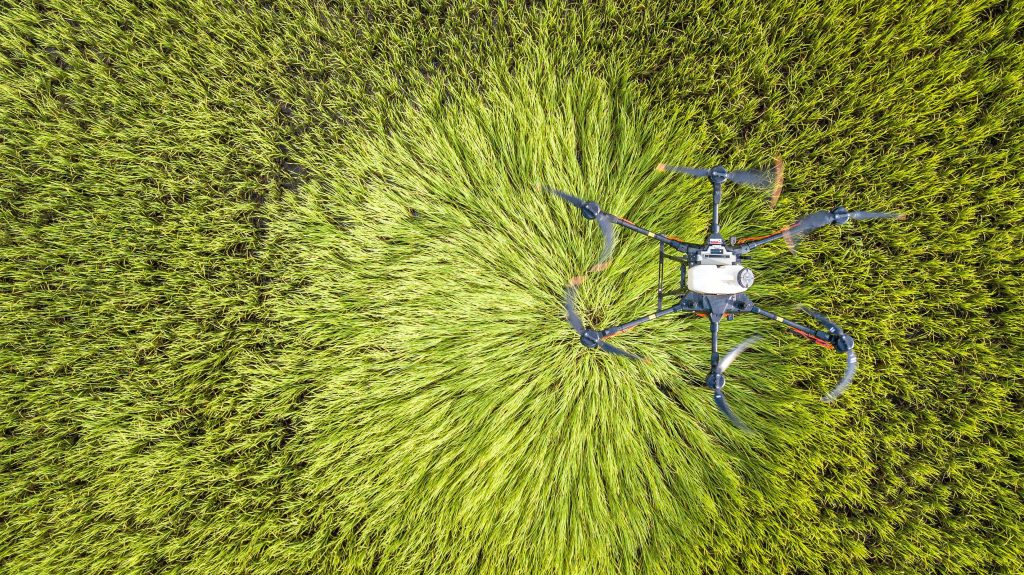At present, it is the Key Stage of field management after transplanting. In order to ensure the early returning of seedlings and early tillering, rice growers in the 225 Regiment of the 14th Division of the Xinjiang Production and Construction Corps seize the favorable opportunity of sunny weather, according to the time of transplanting and the growth of seedlings, timely use agricultural UAVs to supplement organic trace elements of seedlings, help field management through scientific and technological means, and escort rice income increase.
At the 225 regiment sheep fat seed rice planting base, technicians pour the prepared organic trace elements into the drone chassis. Then, accompanied by a rapid “buzzing” sound, drones took off and flew along the rice field at a constant speed. Misty organic fertilizers sprayed out of the body and evenly sprayed onto the seedlings.
Agricultural drones have advantages such as constant speed, constant height, and uniform spraying. Compared to manual operations, a drone can operate up to 1000 acres of farmland per day, greatly saving labor costs, “said Pan Wei, an operator of agricultural drones.
Drone fertilization and application is an emerging technology that has been widely promoted and applied in recent years. Through drone operation, not only can work efficiency be greatly improved, but fertilization and application are also more precise, making various crops more efficient and high-yielding.
Compared to traditional manual mode, the application of drones can greatly improve the efficiency of field operations. At the same time, for special areas with high difficulty in manual operations, drones can also easily carry out operations, saving time and labor, labor costs, and spraying evenly, accurately and efficiently, ensuring a high yield of sheep fat seed rice. “said Chen Xingming, Manager of the Administrative Department of Xinjiang Xiuzhen Agricultural Development Co., Ltd.
It is understood that in addition to rice, drones are also used for operations in wheat, silage corn, public welfare forests, etc. In recent years, the 225 regiment has actively explored the development model of smart agriculture, vigorously popularized and promoted scientific and technological planting methods, improved the modernization level and production efficiency of agricultural production, promoted stable production and income increase for the people, and assisted in rural revitalization.
Some sites of the Xinjiang Production and Construction Corps are located on the edge of the desert, with water resources scarce and high soil salinity and alkalinity. In order to improve the stability and sustainability of the ecosystem, improve the soil, and enhance the sustainability of agricultural development, in recent years, Xinjiang Production and Construction Corps has integrated the advantageous resources of salt tolerant research, strengthened the promotion of Alkali soil improvement technology and the breeding of salt tolerant rice varieties, and formed an arid and semi-arid Alkali soil improvement and salt tolerant rice cultivation technology system, with remarkable achievements in rice high-yield cultivation and large-scale planting.
At present, the Xinjiang Production and Construction Corps has built over 200000 acres of high-quality rice planting bases, accounting for about a quarter of Xinjiang’s rice production. In Alar City of the First Division, Kokdala City of the Fourth Division, Kunyu City of the Twelfth Division and the Fourteenth Division, a large area of Alkali soil in the past is now billowing.







Please sign in to comment
register